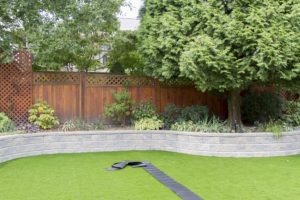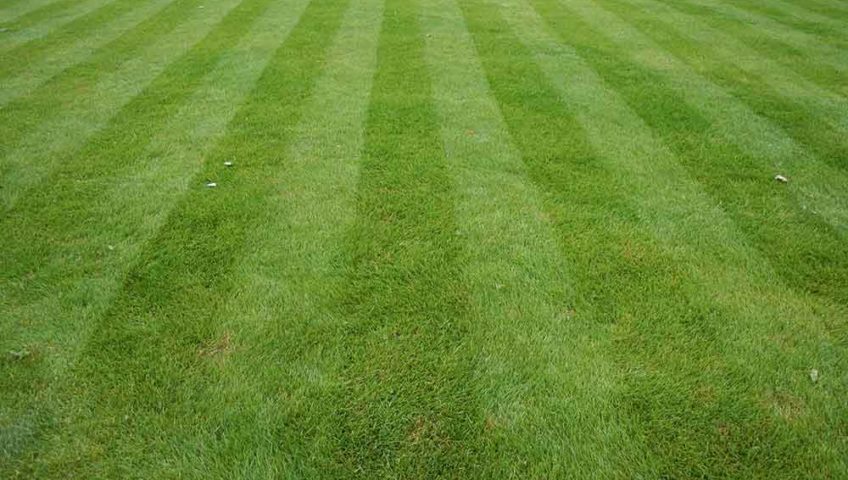For years synthetic grass was considered little more than a curiosity. And who could blame anyone for thinking that way. After all, the first iterations of fake turf were definitely lacking in both visual and tactile appeal. Fast forward a few decades and fake grass is no longer a laughing matter. Today’s synthetic lawns display an amazing realism both in the way they look and in the way the feel underfoot. So much so that people are often surprised when they learn they are walking on synthetic and not real grass. But there’s more to synthetic lawns today than just great looks and an equally great feel. They’re also extremely cost effective and they’re at the forefront of helping bring homes in line with a greener ethos that’s good for the entire planet.
Synthetic Grass: The Financially Smart Choice

Today’s fake grass is the kind of worthwhile investment most folks overlook when they’re contemplating home improvement projects. But they shouldn’t. Not only does artificial grass provide real and immediate aesthetic benefits but that aesthetic boost helps enhance the curb appeal of your home as well. And that has a positive effect on its market value. But that’s not the only financial benefit you enjoy by installing an artificial lawn.
Synthetic grass also means no more money spent watering the lawn. As such your water bills will be substantially reduced during the warm weather months. You also won’t have to spend another dime on fertilizer for your lawn. And all that money you normally spend every summer to have someone mow the lawn every couple of weeks will stay in your pocket from now on once the synthetic lawn is in place. Some may think that this is small potatoes we are talking about here and admittedly over the course of a single year the savings are not going to bowl you over. However, when your realize that artificial grass can last 20 to 25 years (and sometimes more) you begin to realize just how much money you stand to save in the long run.
Synthetic Grass: The Environmentally Wise Choice

Beyond being a smart financial choice synthetic grass has also emerged as a wise and responsible environmental choice as well.
- Water conservation– The average household currently uses approximately 100 gallons of water per day for outdoor purposes, including watering the lawn. Over the course of a year this adds up to a substantial amount of water. In addition an ever-growing number of cities and towns are mandating water conservation and some are imposing outright bans on watering the lawn. Because of this many homeowners are searching for new ways to achieve beauty and sustainability in their landscapes and synthetic lawns answer the call by allowing them to retain a beautiful yard without having to drain the local reservoir.
- Gas conservation– Whether you ride the lawn mower yourself or pay someone else to do it the amount of gasoline used to power that mower over the course of a summer is substantial. By not having to mow the lawn you’ll not only be conserving precious water you’ll also be removing another gas guzzler from the environment. What’s that? The lawn mower a gas guzzler? You bet. On average running a sit-down mower for one hour uses as much gas as driving your car 100 miles. That’s a pretty astonishing fact. Consider that you likely start mowing the lawn in late spring and don’t stop until the middle of autumn. That’s at least a 6 month period. If you have the lawn mowed every other week during that period that’s enough gas to take a 1,200 mile road trip.
Keep in mind too that the fossil fuels spent on lawn care don’t end with the mower. You can add a couple of hundred more miles to your road trip with all the gas used to power trimmers, blowers, chippers and more. In addition, all that fossil fuel that’s being burned is adding CO2 to the atmosphere at a time when we should be cutting back on such things, not simply forging ahead blindly.
- Fewer fertilizers and pesticides– The environmental benefits of artificial grass extend beyond conserving fossil fuel and includes striving to reduce the amount of fertilizer and pesticides used around the home. For instance, nitrogen is commonly added to natural lawns to help them grow thick and healthy. But as much as two-thirds of that nitrogen is never absorbed by the lawn and winds up contaminating groundwater beneath the property or being washed down the storm drain and ending up in local rivers and ponds.
Pesticides are, in many ways, even more destructive than fertilizers in that the pesticides used to protect a lawn can wind up killing birds, causing defects in their offspring and killing bees as well. Pesticides also commonly wind up in ground water where they pose a very real danger to human health. Pesticide contamination has been shown time and again to cause birth defects, exacerbate allergies and contribute to an array of diseases including cancer.
Let’s Not Forget Aesthetics
Before we wrap things up let’s backtrack just a bit and take a parting look at some of those aesthetic benefits we keep touting.
- The feel of genuine turf– Back in the 60s and 70s there is no doubt that artificial turf bore little resemblance to real grass in terms of its feel. Fortunately, years of refinement have resulted in an artificial grass that is in many ways indistinguishable today from the real thing. Artificial grass actually comes in different varieties each of which offer a different tactile experience designed to mimic the feel of different types of natural grass.
- The look of real grass– Not only is today’s fake grass designed to mimic the feel of real grass it’s also designed to mimic the look. You’ll not only have a lawn that’s virtually maintenance free and an environmental winner, but is also virtually indistinguishable from your former natural lawn. And it will keep up its appearance even when your neighbours’ lawns are turning brown.

